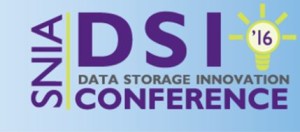Interested in data protection and storage-related features of OpenStack? Then please join us for a live SNIA Webcast “Data Protection and OpenStack Mitaka” on June 22nd. We’ve pulled together an expert team to discuss the data protection capabilities of the OpenStack Mitaka release, which includes multiple new resiliency features. Join Dr. Sam Fineberg, Distinguished Technologist (HPE), and Ben Swartzlander, Project Team Lead OpenStack Manila (NetApp), as they dive into:
- Storage-related features of Mitaka
- Data protection capabilities – Snapshots and Backup
- Manila share replication
- Live migration
- Rolling upgrades
- HA replication
Sam and Ben will be on-hand for a candid Q&A near the end of the Webcast, so please start thinking about your questions and register today. We hope to see you there!
This Webcast is co-sponsored by two groups within the Storage Networking Industry Association (SNIA): the Cloud Storage Initiative (CSI), and the Data Protection & Capacity Optimization Committee (DPCO).










 Bay attendees, as well as those in Silicon Valley. DSI's agenda committee, comprised of SNIA volunteer leaders from leading IT organizations, are attuned to the changing needs of an IT audience confronting next generation data centers, enterprise computing's shift to the cloud, and the drive to data analytics for business decisions. The agenda's 20 themed topics include hyperconvergence, cloud, data protection, big data, security, cloud, persistent memory, software defined storage, containers, and distributed storage. And the 75 sessions within these topics are a mix of industry leadership, SNIA's vendor neutral tutorial education, and sponsored sessions.
The DSI General Sessions emcee, reprising her highly received 2015 role, will be Camberley Bates, Managing Director and Senior Analyst, the Evaluator Group, who will also co-host a keynote on enterprise storage architectures. Additional keynotes at this time include "Storage Architectures for Next Generation Cognitive Analytics" presented by Huawei, and an IBM industry perspective on Enterprise Computing and Data Storage.
New also for 2016 will be a session on results from a new survey co-sponsored by SNIA and the Evaluator group on enterprise deployment of hyperconverged solutions.
We invite you to peruse the DSI Conference
Bay attendees, as well as those in Silicon Valley. DSI's agenda committee, comprised of SNIA volunteer leaders from leading IT organizations, are attuned to the changing needs of an IT audience confronting next generation data centers, enterprise computing's shift to the cloud, and the drive to data analytics for business decisions. The agenda's 20 themed topics include hyperconvergence, cloud, data protection, big data, security, cloud, persistent memory, software defined storage, containers, and distributed storage. And the 75 sessions within these topics are a mix of industry leadership, SNIA's vendor neutral tutorial education, and sponsored sessions.
The DSI General Sessions emcee, reprising her highly received 2015 role, will be Camberley Bates, Managing Director and Senior Analyst, the Evaluator Group, who will also co-host a keynote on enterprise storage architectures. Additional keynotes at this time include "Storage Architectures for Next Generation Cognitive Analytics" presented by Huawei, and an IBM industry perspective on Enterprise Computing and Data Storage.
New also for 2016 will be a session on results from a new survey co-sponsored by SNIA and the Evaluator group on enterprise deployment of hyperconverged solutions.
We invite you to peruse the DSI Conference 
Leave a Reply